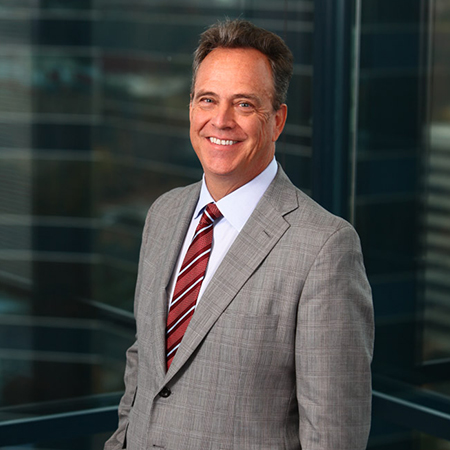What are the keys to creating workplace peace? How can leaders go about mitigating risk and managing conflict in organizations? From creating effective communication practices to being knowledgeable of legal considerations, this article focuses on a number of ways of mitigating risk and managing conflict in organizations.
On March 18th, Pollack Peacebuilding Systems hosted a panel discussion on “Creating Workplace Peace: Mitigating Risk and Managing Conflict in Organizations” as part of our Peacebuilding Panel Series. We were joined by four expert panelists, Sara Jeckovich, Terrell Holmes, John Miles, and Jeremy Pollack, who discussed the topic of mitigating risk, creating peace, and managing conflict in organizations:
Where does creating workplace peace start?

Creating workplace peace starts with defining ‘peace’ and what it means for the workplace. Conflict Resolution Expert Sara Jeckovich started the conversation, explaining that peace does not equal the absence of conflict. One of the biggest mistakes people make in the workplace is trying to avoid conflict at all costs, often in not-so-healthy or sustainable ways.
Instead of viewing peace as the absence of conflict, we should view peace as the ability to remain curious and open to hearing other perspectives when conflict arises. For individuals, a key element here is maintaining one’s own sense of internal peace regardless of outer circumstances or conflict. When one is able maintain their own internal sense of peace, they are more readily willing to remain curious in situations of conflict. For more on cultivating internal peace, check out our previous panel discussion on mindfulness.
How does this all apply to creating peace in the workplace? Sara elaborated on this, expounding that “as an organization, peace starts within the structure…Mitigating risk starts with the structures and policies and the culture that is created to support those structures and policies.” This being said, organizations should ask themselves whether their structures, policies, and culture allow for all voices to be heard and allow for employee growth among all roles. Sara explained further that structures, policies, and culture that do not meet these criteria should change, and that it is important to cultivate a culture that embraces growth, change, and open communication.
Organizations with structures, policies, and a culture grounded in growth, change, and communication will be able to view conflict as an opportunity more readily rather than something to avoid at all costs. When leaders and employees view conflict as an opportunity because their company supports that view, mitigating risk and managing conflict in organizations in a constructive way naturally occurs.
What communication practices should organizations consider to prevent conflict within teams?

PPS Peacebuilder Terrell Holmes tackled this question with a four-stage communication model he utilizes when consulting and coaching people in organizations: Courage, grace, humility, and learning. Terrell elaborated, “the practice I have is to speak courageously, receive it gracefully, be humble and open to what the response is, and be open to learn, ready to modify or adapt if needed.”
First, employees must take the courage to act, especially in situations of conflict. When conflict occurs, many people opt to avoid or ignore it, even if the conflict does not honor their individual boundaries. People usually do this out of fear—they may not feel that there is enough trust and safety in the relationship to speak up. However, avoidance of conflict can lead to the eradication of mutual trust and lead to more conflict further down the road. Terrell spoke to this, elucidating that “when somebody cares enough to say the very worst, you know that they are telling the truth.” Speaking the truth even when it’s hard allows for trust and safety to be built with the people around you. Therefore, it is important that employees speak courageously. Open communication when conflict arises can help build trust in the workplace.
Second, the person receiving the pushback or criticism must accept it gracefully, meaning not firing back a reaction rooted in emotion. Terrell uses the phrase, “feel the emotion, don’t be the emotion” to help people grasp this concept. People are able to express they are angry without yelling and stomping their feet. Once they are able to process the emotion, the employee can take time to think about who the person giving them pushback is and where they might be coming from. Doing this is the essence of accepting the other’s comments with grace.
Third, the person receiving the comment responds to it with humility. In most conflicts and miscommunication, both people involved hold some form of responsibility for its mishandling or escalation. Therefore, when someone comes to you with criticism, it’s important to be open to how you may need to change. Responding with humility is centered around the idea that we may not always be right or do everything perfectly and capturing that in the response.
Fourth, is the importance of being open to learning. This piece operationalizes the constructive communication that you are having with the other. Once both people are able to communicate effectively to the problem that caused a conflict, if they both take stance of being willing to learn and putting some sort of solution into action, they are able to prevent potential negative consequences of future related conflict.
The panelists discussed this model and agreed that this process of courage, grace, humility, and learning is an effective communication practice that can be helpful for mitigating risk and managing conflict in organizations. However, employees must be trained on these communication skills for it to be effective. Truthfully, without learning and practicing how to do this, this type of communication is difficult to implement. If you are interested in learning better communication practices, Pollack Peacebuilding Systems offers communication skills training to organizations.
What legal considerations should organizations consider to mitigate risk due to conflict?

CEO of Miles Mediation, John Miles, spoke to this question. After talking with some of his neutrals that work in employment mediation, John shared that a majority of litigation that occurs in companies could be prevented by hiring someone experienced and well-trained in HR. John further explained that, “too often, you promote from within and someone becomes HR director but they don’t have any training in conflict resolution. They don’t have knowledge of policies, procedures, and the law when it comes to discrimination and harassment.” Putting someone who is knowledgeable of all these things is the first step to mitigating risk and managing conflict in organizations.
John also emphasized the importance of having discrimination and harassment policies that are clear and embedded. Once these have been established, the company needs to make sure the policies are clearly communicated to all employees and to have periodic training to keep employees updated to any changes that have occurred. Additionally, John explicated that the United States has the most sophisticated and talented plaintiffs’ bar in the world, with lawyers that are good at getting causes of action. Therefore, it is important for companies to have proper investigative procedures along with clear policies in regards to matters like discrimination and harassment.
It is important to note that most disputes that go to litigation arise from interpersonal conflicts. When people do not feel heard or respected and the company does not have a culture that embraces change, employee frustration is often circumvented through the legal system in the form of discrimination and harassment claims. As John mentions, when you’re getting sued, “you’re spending the whole time thinking, why didn’t I invest in an HR director? Why didn’t I have these policies, procedures, trainings, and investigation processes clearly communicated?”
Ultimately, legal conflict detracts from company goals and often spends significant monetary resources on things that could have contributed to the company’s purpose. Nobody wants to get sued, but many organizations wait to spend resources on mitigating conflict until after they have been sued. Why not be preventative rather than reactive? It is vital for organizations to invest in things like conflict resolution training to set up preventative measures of dealing with conflict so legal consequences can be avoided. This is essential to mitigating risk and managing conflict in organizations.
What are the best practices regarding assessments in preventing workplace conflict?

Founder of Pollack Peacebuilding Systems, Jeremy Pollack, ended the panel discussion bringing up important points about employee assessments and surveys. There are a number of companies that exist to provide organizations with assessments and measurements like employee engagement surveys, employee satisfaction surveys, feedback systems, and more. Regardless of the methods that organizations use to measure employee data, the most important thing is that organizations do something with the data they receive.
Jeremy explained that two elements are crucial when acting upon assessment results: transparency and inclusivity. First, it is important recognize how transparent companies are with the findings of assessments and how transparent they are about what solutions will be enacted to meet employee needs. For example, Jeremy mentioned a previous client of his would send out surveys consistently to their employees and stakeholders. However, “the response rate was increasingly lower and increasingly inaccurate because the longer it went on for, no one ever heard anything about it.” Realizing they wouldn’t receive any feedback from management, the employees and stakeholders would ignore the survey or put less effort into it. Jeremy elaborated that “it’s so frustrating for employees to fill these things out, go through this process, and be vulnerable, but never hear anything back from it.” It is crucial that organizations are transparent about the results of assessments and the actionable solutions they plan to take in the future.
Second, inclusivity in regard to solution-building is key. Organizations should ask themselves, how are we involving the people that took this survey in the solution-building process? Whether this looks like sending another survey with ideas for solutions or opening up team dialogue, involving the employees who take part in the survey is important. Jeremy illustrated that once these employees are part of the process of creating solutions, the solutions have buy-in and employees feel like they have contributed to something that will affect their work lives. Keeping employees involved in the decision-making process, especially when the decision affects them, is vital to mitigating risk and managing conflict in organizations.
Often, leaders are hesitant to be transparent and inclusive with assessment data because they don’t think it’s a good idea to make the recommended made by employees. In this case, it is better to be transparent about why leadership is hesitant to implement these changes than to keep employees in the dark. By being transparent and inclusive, it is possible to brainstorm other ways to meet the needs of employees that were brought up in the assessment. Additionally, as an organization, if you do not have a plan in place to address the issues that arise from employee assessments, it is often better not to offer the assessments at all. This is sometimes a better strategy for mitigating risk and managing conflict in organizations until you have the bandwidth to formulate an actionable plan.
If you want help from experts on establishing effective peacemaking processes and assessments in regards to workplace conflict, contact us today.



